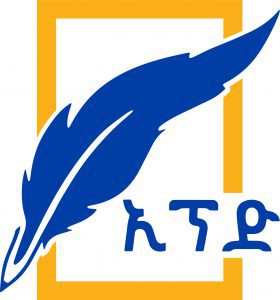
BY SOLOMON DIBABA
Both among the academia and an Ethiopian on the street, it has become customary to talk and write about the shortfalls, lacks and inadequacies on food security and the general poverty profile of the country. Thousands of research documents on poverty and food insecurity are on file in the institutes of hiiger learning and universities across the country.
There were a lot of seminars, campaigns to harness Mother Nature to pull our population from poverty and food insecurity but even today, with all given circumstances including the aftermath of the two years’ war in the northern part of the country, we have more than one fifth of the population which are food insecure.
Some reports by international organizations indicate that, as of May 2021, 5.5 million people (61% of the people in the area) are facing high levels of acute food insecurity: 3.1 million people are in Crisis (IPC Phase 3) and 2.1 million people in Emergency (IPC Phase 4). This dire situation has worsened in 2022 and at the startup of 2023. Moreover, Twenty-seven percent of women in Ethiopia are thin or malnourished and 38 percent of children suffer from stunting in 2022.
Fishing has been practiced across the world from time immemorial right up to the current year. Fish has not only served as major sources of food for millions of the world population but also constitute sources of family and community income. Fish and fishery is an important component of global food security package. The world enjoys 20% of nutritional protein from fish and fish products. Experts on fishery estimate that Ethiopia has a potential capacity of producing more than 51,000 tons.
Given the growing population of the country with more than 2% of annual growth, the current potential of fishery resources can satisfy some 80% of the national annual demand. Ethiopia has a rich diversity of Ichthyo-fauna in its lakes, rivers and reservoirs. The highest fish species two in Ethiopia has been recorded from Baro basin, followed by Abay, Wabishebele and Omo-Gibe basins.
Ethiopian aquaculture is recognized as an alternative means of achieving food security in particular and poverty reduction in general, and is now considered as an integral part of rural and agricultural development strategies. Ethiopia has an estimated live water body of 7,334 km2 of major lakes and reservoirs, and 275 km2 of small water bodies, with 7,185 km of rivers within the country. The country has only inland freshwater fisheries.
The inland fishery comprises Rift Valley lakes such as lakes Chamo, Abaya and Ziway), Lake Tana, Lake Hashenge, Baro and Tekeze Rivers. There is fishing in all these water bodies, but commercializing it is mainly concentrated around lakes such as Chamo, Ziway (Southern Ethiopia) and Tana (North-Western Ethiopia). Hence, the existing role of fishery is insignificant in the country’s overall economy because the fishery sector in the country is far below its potential
Approximately 15,000 fishermen are currently employed in this sector signifying that fishing practice in the country is still in its infancy stage with an average production of about 12,300 tons in 2002. Although there is an alarming level of unemployment in the country even in the agriculture sector, the number of farmers engaged in fishery is far less than expected.
There are seasonal variations in the availability of different types of fish, but as there are some differences between the lakes, traders can smooth out supply to some extent. There are 180 different species of fish in Ethiopia and 30 of those are native to the country. For the sake of convenience, the country’s water bodies are classified into four systems: lakes, reservoirs, rivers and small water bodies. The lakes and rivers support highly diverse aquatic life, ranging from giant mammals like the African Hippopotamus, to microscopic fauna and flora.
On the first week of November 2022, The FDRE Prime Minister, Abiy Ahmed, launched a national poultry, dairy, and honey production development program, themed “YeLemat Trufat”.This program among other things included vegetable gardening and horticulture development.
The campaign’s goals are to increase export earnings, ensure food and nutrition security, and domestically substitute imported products.Leaders who are to coordinate the campaign in Ethiopia’s regions pledged to take over coordination of the national ‘Yelemat Trufat’ program at the invitation of Prime Minister Abiy.
This national development program will be implemented for the next 4 years across Ethiopia. The author of this article has wondered why fishery was not accentuated in the program as an alternative source of narrowing down the level of food insecurity in the country. The author thinks that all necessary links need to be established to ensure that the program should be linked up with the mainline agriculture development of the country and the entire food security strategy for the nation. In addition, it is important to involve all concerned stakeholders in the entire program, both at the federal and global level.
Under the backdrop of the issues raised above, the basic question now is why Ethiopia was unable to develop its fishery resources for internal consumption and possible exports. There are several potential challenges that need to be addressed if the nation is serious to use her fish resources.
The government and institutes of higher learning and universities across the country need to conduct wide ranging researches on how to develop food resources in the internal water bodies of the country to enhance food security instead of focusing only on crop and horticulture food sources.
Editor’s Note: The views entertained in this article do not necessarily reflect the stance of The Ethiopian Herald
THE ETHIOPIAN HERALD 31 JANUARY 2023


